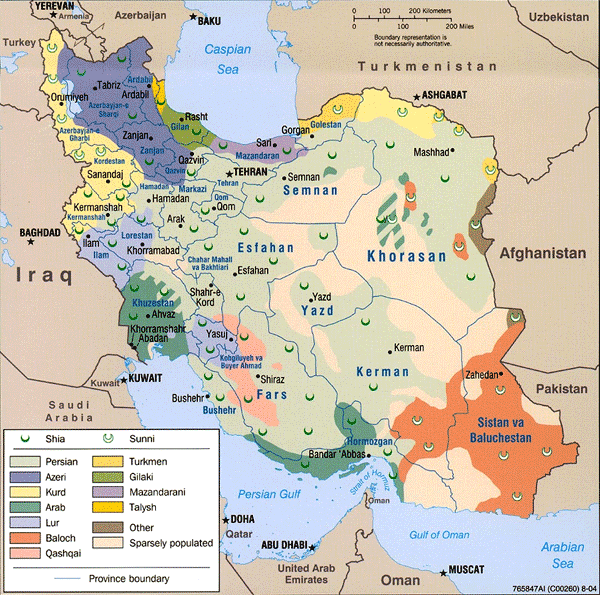About us

This project intends to establish connections between Iranian families by performing mitochondrial (mtDNA) or Y-Chromosome (Y-DNA) test on any male or female with direct ancestry from Iran. The Iranian DNA Project is therefore intended as a research platform for genetic genealogy and not specifically an attempt to investigate Iranian population genetics. For the latter, please refer to one of the sections below ("Seminal Papers").
PROJECT BASIS
Iranian surnames are mostly recent in origin and became the status quo after government-led reforms in the 1920's. Most Iranian surnames are based on occupations, prior homesteads and also culturo-religious symbols. Furthermore, the majority of Iranians lack knowledge of extraneous genealogical identifiers, such as tribe or clan affiliations. As such, many Iranians are unaware of deeper hereditary connections. Due to Iran's ethnic heterogeneity, this project is arranged by ethno-linguistic or ancestral qualifier sub-groups. The project administration is flexible with respect to where members should be allocated and regularly liaises with them regarding the most appropriate descriptions.
PARTICIPATION CRITERIA
Summarised, lines that trace back exclusively to Iran's territory are invited to participate in this project. Iran's population is not limited to the Persian-speaking majority; significant minorities include Azeris, Kurds, Balochis, the Talysh, Lurs, Bakhtiaris, Iranian Arabs, Armenians, Assyrians, Turkmens and the Qashqai.
Users who are allowed to join the project include the following:
1) Confirmed paternal and/or maternal ancestry from Iran at any point in time, irrespective of knowledge of ethnic background (e.g. Persian from Esfahan, Iraqi Kurd with maternal ancestor from Kurdish Iranian region, New World participant with Iranian paternal grandfather)
2) Potential Iranian ancestry (as indicated, for instance, by oral tradition) (e.g. family rumours of originating from southern Iran)
Users who aren't allowed to join the project include the following:
1) Individuals with no apparent genealogical connection with Iran joining simply because their Y-DNA or mtDNA subclade has been implicated as originating in/near Iran at some point over thousands of years (e.g. Y-DNA R1b-L21 Briton joining simply because R1b1a2-M269 has demonstrated some diversity in Iran). As this is firmly beyond the genealogical record in practically every country, this is not considered a legitimate reason to join the group.
2) Individuals with no apparent genealogical connection with Iran assuming a connection due to postulated historical connections (e.g. mtDNA Z Mongolian individual joining because of the numerous Medieval Mongol incursions in Iran). Unless guided by oral tradition, this too is deemed irrelevant to he context of this project.
3) "Project Groupies"; these are defined here as individuals who join as many FTDNA projects as possible for no discernible reason (e.g. mtDNA L Nigerian also joining two dozen other unrelated groups).
Members who join the project and are eligible as per the above are advised to email the project administrator(s) ahead of time and inform them of their paternal/maternal ethno-linguistic background (e.g. Armenian, Azeri, Kurdish, Persian), or specific ancestral qualifiers (e.g. Qajar, Qizilbash, Seyyed).
Members who join the project and are deemed ineligible based on the available account information will be removed from the project without prior warning. If they do in fact meet the criteria above and this wasn't displayed on their accounts, they are advised to re-join and directly email a project administrator clarifying why they are eligible per the above.
Finally, individuals who are ineligible to join the project should kindly note that we have made all mtDNA and Y-DNA publicly viewable. Therefore, there is no imperative to join the project to compare matches. Please download the publicly available data to support your genealogical endeavours.
DISCLAIMERS
Those living in the Middle-East who wish to participate in this project can do so through Eastern Biotech, a Biotechnology firm based in the United Arab Emirates, who work in partnership with Family Tree DNA. For more information, please visit their main site at http://www.easternbiotech.com
The FTDNA Iranian DNA Project is run by genealogy enthusiasts, for genealogy enthusiasts. As a standard FTDNA project, all contributions to the upkeep of this project are done for free and there is no monetary benefit for doing so on our part. We rely entirely on donations and volunteer time to further this project's goals (see "Goals").
Due to time constraints, we may not be able to respond immediately to requests, but will try our best to fulfil the requests of both prospective members and regular viewers.
Should you have any further queries, please contact a suitable administrator as listed on the project home page.
SEMINAL PAPERS
The following are a list of important studies published to date (2015) regarding Iranian mtDNA or Y-DNA that are recommended by this project for further reading. These are split depending on focus (mtDNA or Y-DNA) and listed in order of least recent publication (study name, author name, date of publication, direct link). Other papers are available in the literature, but are deemed to be less informative than those shown below for innumerable reasons (e.g. reduced sample size, insufficient country-wide coverage, sub-par genotyping protocols for the present time).
mtDNA
Discordant patterns of mtDNA and ethno-linguistic variation in 14 Iranian Ethnic groups. Farjadian et al. 2011. http://www.karger.com/?DOI=10.1159/000330166
Mitochondrial DNA and Y-chromosomal stratification in Iran: relationship between Iran and the Arabian Peninsula. Terreros et al. 2011. http://www.nature.com/jhg/journal/v56/n3/full/jhg2010174a.html
Complete Mitochondrial DNA Diversity in Iranians. Derenko et al. 2013. http://journals.plos.org/plosone/article?id=10.1371/journal.pone.0080673
Y-DNA
Iran: tricontinental nexus for Y-chromosome driven migration. Regueiro et al. 2006. http://www.karger.com/?DOI=10.1159/000093774
A Y-STR database of Iranian and Azerbaijanian minority populations. Roewer et al. 2009. http://www.researchgate.net/publication/40041462_A_Y-STR_database_of_Iranian_and_Azerbaijanian_minority_populations
Ancient Migratory Events in the Middle East: New Clues from the Y-Chromosome Variation of Modern Iranians. Grugni et al. 2012. http://journals.plos.org/plosone/article?id=10.1371/journal.pone.0041252